In this Ready To Die edition of “Stray Shots,” we recount our first time hearing Mr. Frank White and just how it changed us. They say that art is transformative, and after coming to the realization that 1990 was 24 years ago, you can’t help but think it to be true. Much has changed since then, and the effects of the last decade of the 20th century are always hotly debated. For Hip Hop, none possibly more than Biggie’s impact on the culture he helped push forward, his gritty depictions of New York street life, his eventual rise to superstardom, and the fall that accompanied it. That fall did not just snuff out one life, but two, both of them (B.I.G. and Tupac) heroes to us and villains to others. These kinds of differing perspectives used to be at the very core of all Rap debate. How does this person telling this tale relate to me? Further still, in our little microcosmic culture, how we regarded the best and the worst were always different, say, than how CBS or CNN saw them. We all felt like outsiders, then. Keepers of a secret that the wider world did not wish to understand.
Hip Hop, though, and Rap in particular have now become the dominant language of our social lives. It is the language of the web, and the language of the meme. It comes to you in traffic or in your kitchen. There is a lyric for almost every situation in your life, and whether you believe in this or that thing, chances are you believe in Hip Hop. The ones that don’t are now the minority. The Notorious B.I.G. was a huge reason for that shift. And, because life is strange, his death may have done more for Hip Hop’s future pop cultural appeal than his life. To see a collective mourn something that way, with such fervor, tends to allow other humans to feel some connection to others. Even those they may have previously shunned.
Whatever the case, since the death of the Notorious B.I.G. on March 9, 1997, Hip Hop has exploded. Sean “Puffy” Combs pushed forward, ushering in the “Shiny Suit Era” amongst other things, and while the king of New York wasn’t there to see it, all of Rap now lives in his shadow, having to answer to his work if talk of taking any thrones is possible. So here’s a look back at our own B.I.G stories, if only to inspire you to think about your own.
When Did You First Encounter Biggie’s “Ready To Die?”
Andre: I had been dragging my parents to the mall to buy tapes for a few years now. I’d get that A, or mop that floor spotless, then with red, pruned hands or triumphant, we’d somehow pile into our little 1990 Honda Civic and head to Green Acre’s. That old place was built on an old former airfield from the ‘20s or ‘30s, but the Depression and two World Wars had sucked the money out of it, and now, because this was America, it was a mall. It had a Macy’s and an Alexanders and J.C. Penny’s, and it introduced me to the pleasure of Cinnabun, and the utter devastation a girl could level upon you if she ignored you when you tried to spit game. But that came later. At first it was cool. ‘90s R&B was pretty much all I listened to since my parents only played R&B in the house. Then 1994 came, and you get rebellious. I was 11, so I wasn’t trying to hear about all that soft-ass love shit. I’d just discovered the Wu the year before, and I was off that Soul For Real and on “Protect Ya Neck.” My parents got nervous, but not as nervous as they would get when they found me blasting “Suicidal Thoughts” on my brand new Panasonic. That’s when they flipped out. That’s not when I first heard B.I.G., though. Let’s go back a bit further for that.
The very first time I heard B.I.G. I was rummaging through my sister’s closet looking for shit she kept from our folks. Sometimes you’d find really good stuff like a stray Pharcyde or Tribe album. I discovered Low End Theory that way, and Digable Planets and I was diving for more pearls when I remembered we were supposed to hit the mall. Fast forward to me in Sam Goody trying to spend this lunch money burning a hole in my pocket, and I saw that bare white cover with a baby on the front and the word “Juicy.” I was the kind of asshole that would just pick up random tapes on the wall the singles were, so I spent between $3.99 and $4.99 on that thing, which, in 2014 money, is like $53. I get home and rip the plastic off that motherfucker with great speed. Put it in my tape deck and heard that baritone dropping gem after gem out of those speakers and it was over. I called my boy up—because you could call a male then and not feel berzerk and weird or think that it had to be important—and asked him who this Notorious B.I.G guy was, mind clearly blown. He laughed, and it’s been different ever since. My clothes got baggier, almost immediately. I was suddenly aware, like Adam and Eve in the garden, that there was this type of thing out there. Then, for the next three years, it was good.
Omar: Believe it or not, my first memory of hearing Biggie is kind of hazy. I want to say it was either seeing “Warning” or “Big Poppa” on Video Music Box. For those who are either unfamiliar or don’t remember, Video Music Box was Ralph McDaniels’ creation. For $.99, you would call an automated line and basically watch any music video they had access to on demand. I instantly recognized him as the big dude from Super Cat’s “Dolly My Baby” remix and the “Flava In Ya Ear” remix. I guess this is the part where I have to confess that I was never a huge fan of “Juicy” and therefore slept on Biggie for the first few months of his debut.
One of the main things that stick out to me about 1994 was that raw, “keep it real” aesthetic. Buckshot was leaving white chalk on rugs, Dre and Snoop were threatening to pull a whoride on Uncle Luke, and GZA was warning emcees to “come strapped with a fuckin’ pamper” lest they lose bowel control. Biggie fit right in there with threats to snatch the #1 Mom pendant and pregnant women’s doorknocker earrings if they interfered with the juks. Hearing Biggie reminded me of a kid named Jimel whose family stayed in our apartment building growing up. I suspect everyone knew a Jimel—the generally grimy type who would kill roaches with his bare hands, duff out peanut butter and syrup sandwiches in 45 seconds flat and sock you in the mouth for a single food stamp. But unlike the Jimels of the world, Big mixed in that flossy element. From top-shelf champagne, to the flip phones in “Warning” to the Coogi sweaters and minks, you could see the transition from the rugged early ‘90s to the opulent turn of the century unfolding right before your eyes.
I didn’t make it to New York until about 14 years after I first heard Ready To Die. As someone who has spent half of his life in Southern California, I’m always making fun of the tourists on Hollywood Boulevard with their fanny packs and DSLRs. But please believe Biggie put me in tourist mode too. When I hopped off the train and finally saw what had since been turned into a gentrified Brooklyn, it all came flooding back to me. When I crossed Fulton Street or Nostrand Avenue, they felt familiar despite being totally new territory. Those infamous pics of Biggie rapping and shooting dice outside the bodega were burned in my mind’s eye, and I think that’s a tribute to just how vivid of a picture Biggie painted. We all have different reasons, but I suspect that nostalgia is part of why everyone is celebrating Ready To Die this week. To me, B.I.G. painted a snapshot in my mind that’s as important to not only Hip Hop, but important to impoverished city dwellers as Scorsese flicks are to Mafia enthusiasts. It’s a crime against Hip Hop that Biggie was gunned down in his prime. And through his death as well as the murders of Tupac Shakur, Big L, Freaky Tah, Scott La Rock and countless others, hopefully we’ll learn to appreciate Hip Hop’s great emcees while they’re still alive.
Omar Burgess is a Long Beach, California native who has contributed to various magazines, newspapers and has been an editor at HipHopDX since 2008. Follow him on Twitter@omarburgess.
Andre Grant is an NYC native turned L.A. transplant who’s contributed to a few different properties on the web and is now the Senior Features Writer for HipHopDX. He’s also trying to live it to the limit and love it a lot. Follow him on Twitter@drejones.
RELATED: Stray Shots – Debating New York’s 5 Most Relevant Rappers Right Now [Editorial]
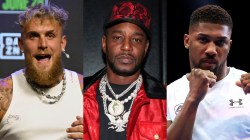

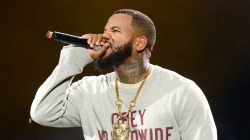
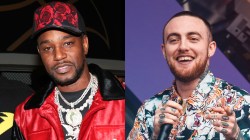
![Method Man Admits He Didn't Like Drake's "Wu-Tang Forever": "I [Wasn't] Getting On That"](https://hiphopdx.com/wp-content/uploads/2025/12/method-man-drake-wu-tang-forever-remix.jpg?w=250)
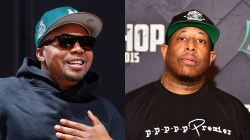

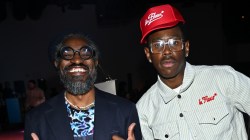

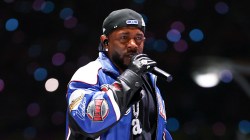
This Man Is A Legend and always will be just like Tupac.
Man has it really been 20 years… Wow how time fly’s
http://com-gc.com/MegaMusicMaker
I first heard Ready to Die in like ’09 while riding around with my older cousin. I was like 14 at the time. I just remember thinking that “Gimmie the Loot” was the illest shit ever. that was my introduction to Biggie, he’s been one of my favorites ever since. sad to say that I heard John Cena’s version before hearing the original Biggie Smalls version